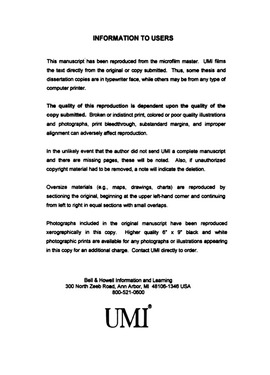| dc.contributor.advisor | Ryan, Stewart, | en_US |
| dc.contributor.author | Mansell, Edward Runge. | en_US |
| dc.date.accessioned | 2013-08-16T12:30:48Z | |
| dc.date.available | 2013-08-16T12:30:48Z | |
| dc.date.issued | 2000 | en_US |
| dc.identifier.uri | https://hdl.handle.net/11244/5911 | |
| dc.description.abstract | Three parameterizations of a noninductive graupel-ice mechanism and various strengths of inductive graupel-droplet charging were tested. For a given storm type, the charge distribution and lightning produced by the different parameterizations had several similarities, but also important differences. For example, choices of average impact angle and separation efficiency that gave greater inductive charging tended to cause earlier development of a lower positive charge region and were more likely to produce enough lower positive charge to cause negative cloud-to-ground lightning. | en_US |
| dc.description.abstract | The numerical cloud model used for the simulations is three dimensional and includes detailed bulk microphysics, with separate categories for cloud water, rain, cloud ice (columns, plates, and rimed), snow aggregates, three graupel densities, two size ranges for hail, and frozen drops. Lightning discharges were produced by a stochastic dielectric breakdown model that extends flashes bidirectionally in a step-by-step manner and creates realistic, fractal-like branch structure. The simulations produced a wide variety of lightning types, including horizontally extensive bilevel. intracloud flashes, positive and negative cloud-to-ground flashes, and intracloud discharges involving charge layers at the cloud boundary. Simulated flashes sometimes reversed the net charge density locally, and this added complexity to the charge structure of the storm. | en_US |
| dc.description.abstract | One important result was that all lightning originated between regions of opposite charge, as has been inferred previously for cloud flashes and negative cloud-to-ground ground flashes. However, in many cases, enough charge was in anvils for initiation to occur several tens of kilometers from deep convection, a behavior not yet documented in published observations. Furthermore, positive cloud-to-ground flashes also were initiated between opposite charges in our simulations, a relationship not suggested previously. Positive cloud-to-ground lightning occurred only when the lowest significant charge region near the initiation point was negative. | en_US |
| dc.description.abstract | Thunderstorm simulations were performed for a strong, airmass storm and three types of supercell storms, and several different electrification parameterizations were used for each type of storm. The main focus of our analysis was characteristics of the resulting charge distributions and lightning, with two major goals: (1) Examine how sensitive the characteristics are to changes in the parameterizations. (2) Begin analyzing how the characteristics are affected by variations in the kinematic and microphysical structure of storms. | en_US |
| dc.format.extent | xix, 211 leaves : | en_US |
| dc.subject | Thunderstorms. | en_US |
| dc.subject | Thunderstorm electricity. | en_US |
| dc.subject | Lightning. | en_US |
| dc.subject | Physics, Atmospheric Science. | en_US |
| dc.title | Electrification and lightning in simulated supercell and non-supercell thunderstorms. | en_US |
| dc.type | Thesis | en_US |
| dc.thesis.degree | Ph.D. | en_US |
| dc.thesis.degreeDiscipline | Homer L. Dodge Department of Physics and Astronomy | en_US |
| dc.note | Major Professor: Stewart Ryan. | en_US |
| dc.note | Source: Dissertation Abstracts International, Volume: 61-02, Section: B, page: 0895. | en_US |
| ou.identifier | (UMI)AAI9960908 | en_US |
| ou.group | College of Arts and Sciences::Homer L. Dodge Department of Physics and Astronomy | |
